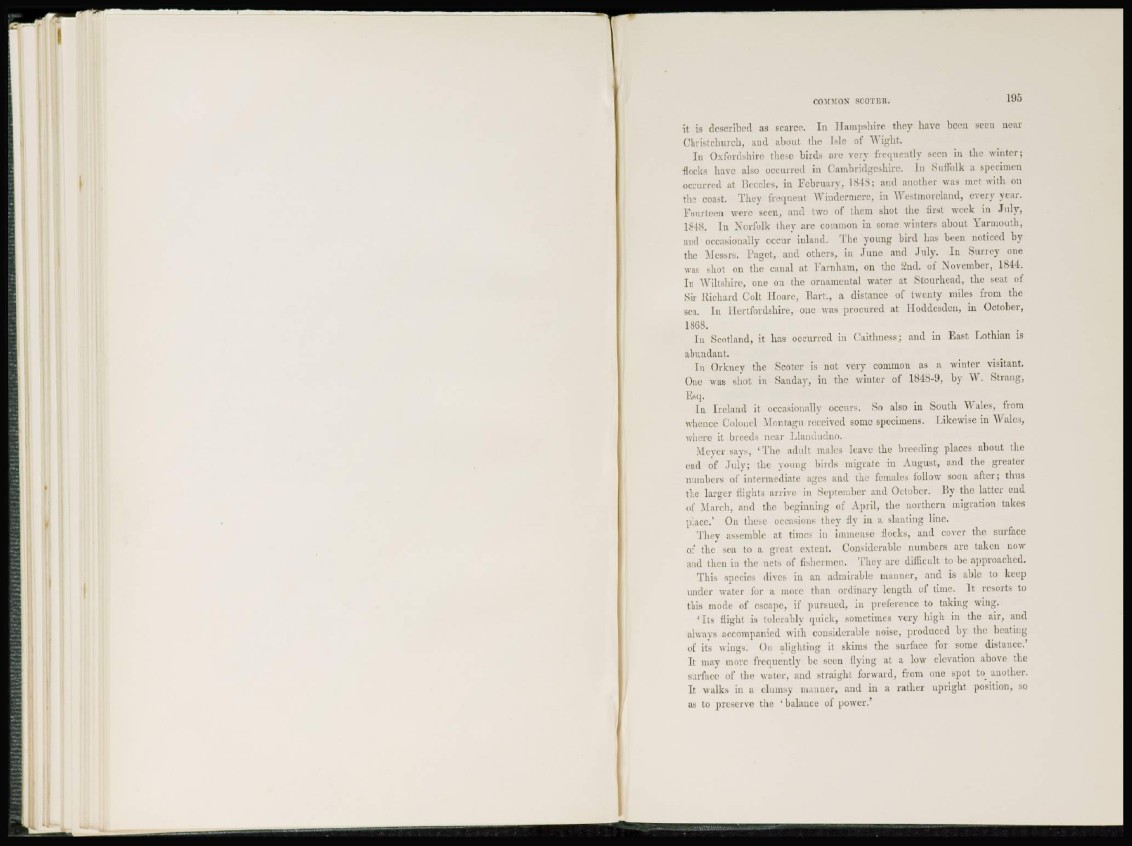
COMMON SCOTER. 195
it is described as scarce. In Hampshire they have been seen near
Christchurcb, and about the Isle of Wight.
Iu Oxfordshire these birds are very frequently seen in the winter;
flocks have also occurred in Cambridgeshire. In Suffolk a specimen
occurred at Beccles, in February, 1848; and another was met with on
the coast. They frequent Windermere, in Westmoreland, every year.
Fourteen were seen, and two of them shot the first week in July,
1848. In Norfolk they are common in some winters about Yarmouth,
and occasionally occur inland. The young bird has been noticed by
the Messrs. Paget, and others, in June and July. In Surrey one
was shot on the canal at Farnham, on the 2nd. of November, 1844.
In Wiltshire, one on the ornamental water at Stourhcad, the seat of
Sir Richard Colt Hoare, Hart., a distance of twenty miles from the
sea. In Hertfordshire, one was procured at Hoddesden, in October,
1868.
In Scotland, it has occurred in Caithness; and in East Lothian is
abundant.
I u (trkney the Scoter is not very common as a winter visitant.
One was shot in Sandav, in the winter of 1848-9, by W. Strang,
Ksq.
In Ireland it occasionally occurs. So also in South Wales, from
whence Colonel Montagu received some specimens. Likewise in Wales,
where it breeds near Llandudno.
Meyer says, ' T h e adult males leave the breeding places about the
end of July; the young birds migrate in August, and the greater
numbers of intermediate ages and the females follow soon after; thus
the larger flights arrive in September and October. By the latter end
of March, and the beginning of April, the northern migration takes
place*1 On these occasions they fly in a slanting line.
They assemble at times in immense flocks, and cover the surface
of the sea to a great extent. Considerable numbers are taken now
and then in the nets of fishermen. They are difficult to be approached.
This species dives in an admirable manner, and is able to keep
under water for a more than ordinary length of time. It resorts to
this mode of escape, if pursued, in preference to taking wing.
' Its flight is tolerably quick, sometimes very high in the air, and
always accompanied with considerable noise, produced by the beating
of its wings. On alighting it skims the surface for some distance.'
I t may more frequently be seen flying at a low elevation above the
surface id' the water, and straight forward, from one spot to another.
I t walk* iu a clumsy manner, and in a rather upright position, so
as to preserve the 'balance of power.'